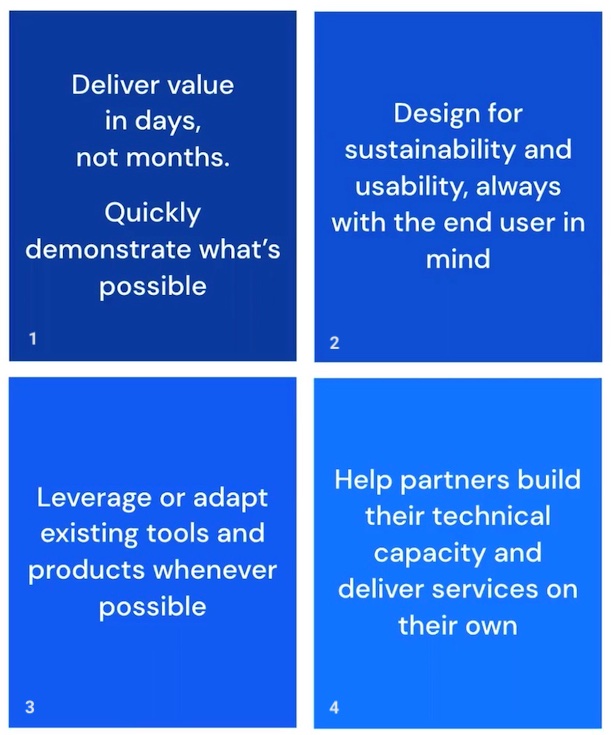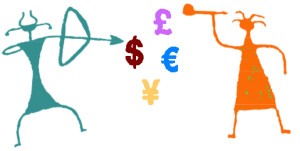US Digital Response is a nonprofit that leverages a network of pro bono technical expertise – volunteers – to help governments, nonprofits, and public entities respond quickly to critical public needs. As of May 2023, USDR has partnered with almost 300 government and nonprofit partners on nearly 400 projects. For instance, a state workforce partner needed to reopen applications for multilingual claimants who were previously denied benefits and determine if they are eligible to receive retroactive PUA payments. Many claimants had not interacted with the UI system in months or possibly years, causing the potential for confusion when the department reached back out to the claimant. Another concern was the increased call center activity, putting additional strain on support staff working through a backlog of cases from existing claims. To help combat these issues, the state agency wanted to create a self-guided experience that was clear for claimants as well as reduce load on their call center. USDR volunteers helped them do this.
I really like this guide from US Digital Response on how their projects work. I think it’s how all ICT projects that help nonprofits – and indeed, how all capacity-building projects, even those that do not involve tech – should work. Too often, when expert consultants, whether volunteer or paid, come into a program to create what is supposed to be a sustainable project – ICT-related or not – it never really gets adopted by the agency. That’s time and money wasted. I think following this guide can help stop that:

Let’s take a closer look at each of these:
Deliver in values in days, not months. This isn’t possible for every project, tech-related or not. But it’s always worth thinking about: is there a small win that could be achieved early in a project that, ultimately, will take longer and will quickly demonstrate what’s possible, show why this is worth doing, etc.? If the project will take a long time, could small wins every few weeks be built into the project development?
Design for sustainability and usability, always with the end user in mind. Can I get an amen?! I feel so strongly about this, it really should be number one. To me, sustainability means that what you create can be taken over by the regular staff, whether employees or volunteers, when you, the person designing and implementing this, move on. If that’s not possible, IT’S NOT WORTH DOING. And to do this means you have focused on usability.
Leverage or adapt existing tools and products whenever possible. The first thing I do when I go into an organization is to access what they have in terms of software, hardware, forms and processes. I do NOT go in and start switching whatever they are using for document-sharing, live chat, photo-sharing with the public, donor tracking, etc. The organization MAY have all that they need – they just need to improve how they use it.
Help partners build their technical capacity and deliver services on their own. This, to me, links back to my comment about sustainability.
Of course, all of this is easier said than done. The biggest thing that has affected the success of my own change-based projects at an organization is a leader suddenly changing their mind about what they want and retreating into the but that’s the way we’ve always done it mentality. A lot of people say they want a change, or something new, but then balk when they see what that is really going to look like. I’m not sure what the process is to diplomatically ask, “You say this is what you want – but do you really?”
Also, I am always fascinated how a staff person or volunteer can have an idea for a new way of doing things and it’s rejected outright – but a consultant can suggest the same thing and it’s immediately endorsed and implemented. Before your organization looks for outside expertise, take an honest look inside – you may already have the inspiration, talent and energy you need among current staff.
Also see:
- Innovation without replication is a waste of time.
- The Impact of In-Person Usability Demos on Web Designers
- Can volunteer engagement cultivate innovation?
- Innovation & tech need to work for women and girls too
- One(-ish) Day “Tech” Activities for Volunteers
- Non-IT Staff Taking the Lead on the Exploration of Technology Use
- Introducing New Technology Successfully into an Agency and Why Your Agency Needs a Technology Plan
- Advice on Choosing Volunteer Management Software
- Web Site Construction & Content Suggestions for Nonprofits, NGOs and small government offices.
- If I can’t find what I’m looking for on your web site, who else can’t?

If you have benefited from this blog or other parts of my web site and would like to support the time that went into researching information, developing material, preparing articles, updating pages, etc. (I receive no funding for this work), here is how you can help.

 I’ve updated
I’ve updated 


